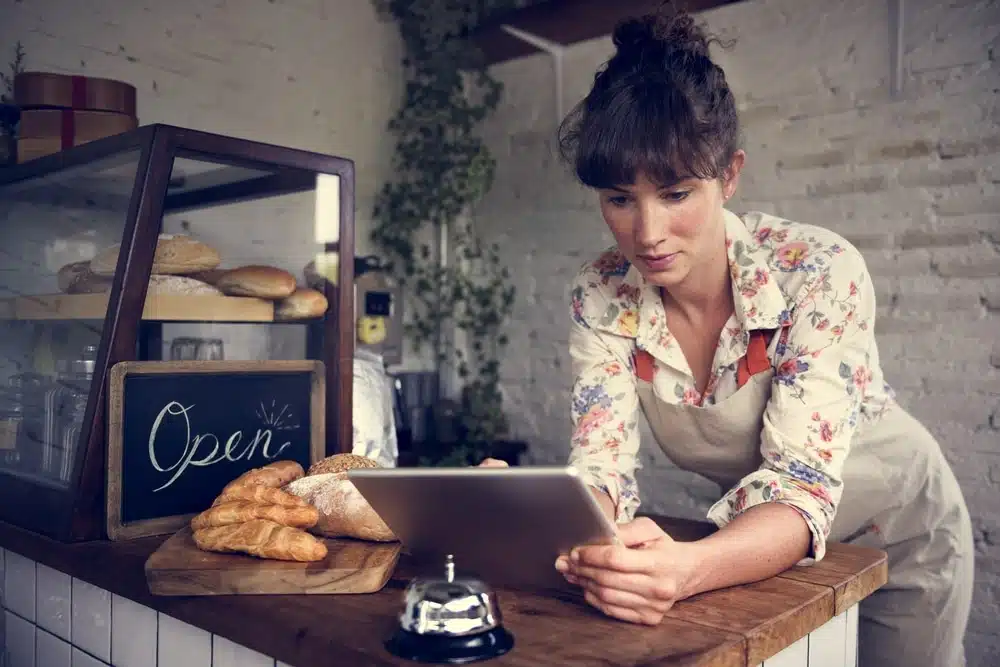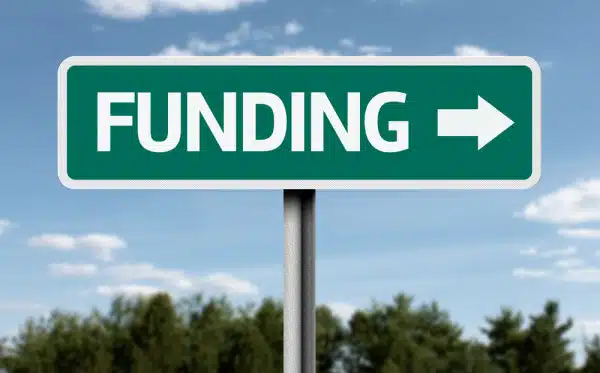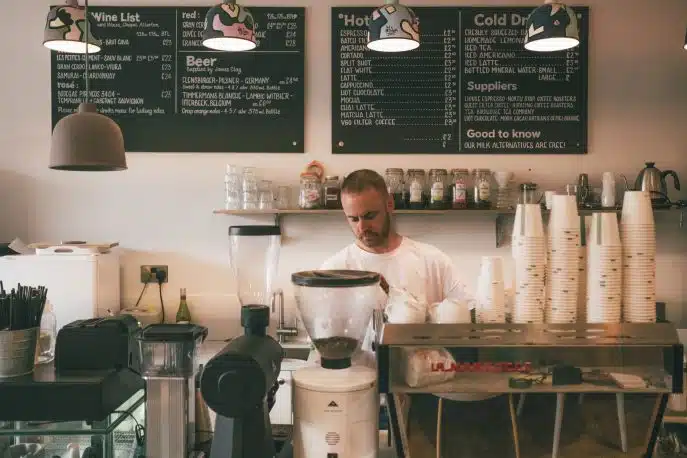You want to start a café but you don’t have a lot of money at your disposal. Don’t let this stop you, as it is still possible to begin your new venture despite this.
Starting a business with no money is a difficult prospect, regardless of your industry. For those aspiring to become a coffee shop owner and pursue their coffee shop dream, starting a café business presents several unique challenges that you need to overcome.
Of course, you need to have a physical location, which creates costs related to rent and maintenance. Your café may also require specialised equipment, creating even more costs. And that’s all before you start thinking about spending on stock, marketing, and other business-related issues.
This may make you wonder how to start a café business when you don’t have a lot of money. It’s important to remember that starting your own business often requires you to invest your own money and demonstrate commitment to potential lenders or investors.
The good news is that there are a few good low-cost ideas for opening a café. Overcoming these initial challenges is a crucial step toward building a successful business. But before we start with those, there’s one thing you need to do…
Step 1: Research and Planning
Before you pour your first cup, it’s essential to dive deep into research and planning. The coffee shop industry is competitive, and understanding your market can make all the difference. Aspiring coffee shop owners should start by analyzing the local landscape—look at existing coffee shops, study their strengths and weaknesses, and identify gaps in the market. Prospective cafe owners should also consider what business model and business structure will best suit their goals, as these choices will shape the shop’s concept, target market, and financial approach. Who is your target audience? What are their preferences, and how can your coffee shop business meet their needs better than others?
Dig into trends in the coffee industry, from specialty coffee beans to the latest in coffee equipment. This research will help you shape a coffee shop concept that stands out and appeals to your ideal customer base. Creating a detailed coffee shop business plan is a foundational step for securing funding and guiding your business decisions. By understanding the local demand, customer habits, and what other businesses are offering, you’ll be able to craft a business plan that’s both realistic and inspiring. Careful planning at this stage sets the foundation for a successful coffee business and brings your coffee shop dreams one step closer to reality.
Step 2: Creating a Lean Business Plan
A lean business plan is your roadmap to turning your coffee shop concept into a thriving business. For aspiring coffee shop owners, this plan doesn’t need to be lengthy or complicated—it just needs to cover the essentials. Start by clearly defining your coffee shop’s unique selling proposition and target audience. Outline your marketing strategy, including how you’ll attract and retain customers, and detail your operational plan, from sourcing coffee to daily management.
Financial projections are key, especially if you’re seeking funding through traditional business loans, private investors, or crowdfunding campaigns. Your business plan should also include a thorough analysis of the coffee shop industry, highlighting your competition, market trends, and customer needs. By focusing on these core elements, cafe owners can ensure their business is viable and attractive to potential backers. A lean business plan not only helps you secure the right location and suppliers but also keeps your coffee shop on track for sustainable growth.
Determine Your Budget
No matter how you look at it, starting a café will cost money. It is crucial to determine exactly how much money you will need by calculating your precise startup costs. Doing so will help you should you choose to either get a loan or speak to investors about your idea. Managing your finances carefully and considering different ways of raising money, such as crowdfunding or private investment, is essential to ensure your café’s success.
This means you need to create a budget for your café that feeds into a business plan.
Start with the concept behind your café. The hospitality industry is extremely competitive so you need to find a way to stand out. Figure out how you’ll differentiate your café and what extra costs that may create.
From there, budget for everything – from the cost of rent and equipment through to staff salaries and legal fees. Get as clear an idea as possible of the costs beforehand. This ensures you have the required answers if you use any of these low-cost ideas for opening a café. When considering funding sources, look into seeking financial support from financial institutions such as banks or the SBA, which offer loans and programs tailored for small businesses. Angel investors are another potential source of funding for new cafe ventures.
The Five Low-Cost Ideas
Idea #1 – Speak to Family and Friends
Relying on your family and friends to borrow money comes with several advantages. You won’t have to deal with banks, which means no complex loan applications. And you also won’t need to prove your income or deal with hefty contracts.
However, this isn’t a perfect solution.
Remember that you’re starting a business, which means that things can go wrong. If the café fails, you could damage the relationships you have with the friends and family that you borrow money from.
As such, it’s crucial that you explain all of the risks involved in the venture. It may also be a good idea to create a more formal arrangement with the person who’s lending you the money.
Idea #2 – Consider Doing It Online
This is a concept that’s becoming more prevalent, especially in recent months.
People have grown more used to the idea of ordering everything they need from the web. This means your café may not even need a physical location. Instead, you would just need your kitchen, a good menu, and the ability to deliver food to your customers. It’s important to offer a variety of curated food options, including gluten-free, vegan, and vegetarian choices, to accommodate different dietary needs and appeal to a wider audience.
A good website is a must if you use this idea. The site has to explain the concept of an online café effectively and help people feel confident about ordering from you.
Timeliness will also be a priority. Your customers will expect to receive their food quickly, which means you have a logistical component to figure out.
If you get this right you can run a successful café from the comfort of your own home.
Idea #3 – Avoid the Things That Café Owners Often Overspend On
If you want to start a café, you need to keep a close eye on your expenses. Unfortunately, there are several that can run away from you if you’re not careful.
The following are the areas where café owners often overspend:
- Overspending on new kitchen equipment when you can find suitable second-hand options
- Spending money on technology, such as point-of-service tech, when you don’t really need it
- Overinvesting in your marketing and sales efforts
- Making poor menu choices, including failing to set appropriate price points, which can lead to overspending on food
When you’re trying to figure out how to start a café business with very little money, expenses are a key issue. Failure to track them means they eat into your limited budget so you have nothing left over for business-critical needs.
Idea #4 – Try Crowdfunding
No longer a brand-new concept, crowdfunding is a great way to get investment from regular people.
Generally speaking, you will use a crowdfunding platform to pitch your idea for a café. Regular people will then invest their money in return for something that the business can offer them.
For a café, such returns could include things like discounts on certain menu items or lifetime free delivery.
Crowdfunding campaigns succeed based on the strength of both the idea and the rewards for investors. But if you struggle to offer something concrete for either, you might not make this option work.
Idea #5 – Get an Unsecured Business Loan
Typical business loans require you to place an asset up as collateral on the loan. For example, a new business owner may have to use their own home as collateral. This creates a lot of risk, as well as requiring you to have access to a suitable asset. Using a home equity line of credit (HELOC) is another option, but it also puts your home at risk if you default, and you could face high interest rates depending on the terms set by financial institutions.
If you’re trying to figure out how to start a café business with no money, you may not have such an asset.
Thankfully, there’s another way to get financing without any asset or collateral.
Unsecured business loans provide you with cash and a low barrier to entry. You may be able to access thousands of dollars without having an asset to your name. And better yet, application processes for these loans are often much simpler than they are for traditional business loans. However, be aware that unsecured loans and credit cards can also come with high interest rates, which can significantly increase your overall cost of funding.
An unsecured business loan could provide you with the capital needed to start a café. You can then rely on the income the business generates to make your repayments.
Step 4: Finding Suppliers on a Shoestring
Sourcing quality supplies for your coffee shop doesn’t have to break the bank. Cafe owners working with very little money can still find reliable coffee equipment and coffee suppliers by thinking creatively. Start by connecting with local coffee roasters and suppliers—often, smaller businesses are willing to work with new cafes and may offer flexible terms. Attend trade shows and industry events to network and discover new products that fit your budget.
Consider purchasing used or refurbished coffee equipment, or explore leasing options to minimize upfront costs. Don’t overlook local food suppliers who can provide fresh ingredients at competitive prices. By building relationships with the right suppliers, you’ll ensure your coffee shop is well-stocked and ready to serve customers without overspending. Smart sourcing helps you save money while maintaining the quality your customers expect from your cafe.
Step 5: Location and Licenses—What You Need to Know
Choosing the right location is a critical step in launching a successful coffee shop. Look for a spot that’s easy to find, has plenty of foot traffic, and is convenient for your target audience. Make sure the space is zoned for commercial use and meets all local business requirements. Before you open your doors, you’ll need to secure the necessary licenses and permits, such as a food service permit and sales tax registration.
Partnering with an existing business or established businesses can offer valuable opportunities for shared space, customer cross-traffic, and reduced startup costs when opening a new cafe. You might also consider starting with a small coffee shop format, such as a kiosk or food truck, to test your concept and build a customer base before expanding into a larger location.
Research local regulations, zoning laws, and health department standards to ensure your coffee shop is fully compliant. Taking the time to understand these requirements will help you avoid costly delays and set your cafe up for long-term success. With the right location and all the proper paperwork in place, you’ll be ready to welcome customers and start building your business.
Step 6: Marketing and Launch on a Budget
Launching your coffee shop doesn’t have to mean spending a fortune on marketing. With a little creativity, aspiring coffee shop owners can build buzz and attract customers even with very little money. Start by establishing a strong presence on social media platforms like Facebook and Instagram—share your story, showcase your coffee, and engage with your community. Use email marketing and loyalty programs to keep customers coming back.
Host events such as coffee tastings or live music nights to create excitement and draw in new faces. Develop a marketing plan that highlights your unique brand identity and leverages word-of-mouth referrals. Building a simple website can also help customers find your cafe and learn about your offerings. For a new cafe, using management tools and integrations can streamline operations and make the launch process smoother. By focusing on cost-effective strategies, cafe owners can successfully launch their business, grow their customer base, and turn their coffee shop dreams into reality—no big budget required.
Could an Unsecured Business Loan Work for You?
Each of these ideas can provide a route to café ownership. However, it’s the final one that we can help you with directly.
At Unsecured Finance Australia, we offer unsecured business loans of up to $300,000. With these loans, you can access the money you need to start your café without having to invest heavily up-front.
To find out more apply online for an unsecured loan today
Managing Finances and Growth on a Tight Budget
Running a coffee shop business on a shoestring budget means every dollar counts. For aspiring coffee shop owners, the key to long-term success is mastering the art of financial management while still finding ways to grow. Start by tracking all your expenses and income closely—this will help you spot areas where you can save money and identify opportunities for reinvestment. Use your business plan as a living document, updating it regularly to reflect changes in your finances and business goals.
Explore low cost ideas to reach your target audience, such as collaborating with local artists for in-cafe events or cross-promoting with nearby businesses. These partnerships can help you attract new customers without a hefty marketing spend. Consider offering seasonal specials or loyalty programs to boost sales and keep your customer base engaged. By staying disciplined with your finances and always looking for creative ways to grow, you can build a resilient coffee shop that thrives even when funds are tight.
Maintaining Quality and Consistency Without Breaking the Bank
Delivering a top-notch coffee experience is what sets a successful coffee shop business apart, but it doesn’t have to come with a hefty price tag. Cafe owners can maintain high standards by focusing on the essentials: great coffee beans, reliable coffee equipment, and attentive service. Build relationships with trusted suppliers who offer quality products at reasonable prices, and don’t hesitate to negotiate for better deals as your business grows.
Investing in staff training pays off, too—well-trained employees can consistently deliver excellent coffee and customer service, helping to build a loyal customer base. Streamline your menu to focus on your best-selling items, which reduces waste and keeps costs manageable. By prioritizing quality in every cup and ensuring consistency in your operations, your coffee shop can earn a reputation for excellence without overspending.
Overcoming Challenges and Obstacles as a Cash-Strapped Cafe Owner
Every cafe owner faces hurdles, but those with limited finances need to be especially resourceful. When traditional funding isn’t an option, look into alternative financing like crowdfunding campaigns, private investors, or support from financial institutions that cater to small businesses. Don’t overlook the power of community—joining a co op or partnering with other businesses can help you share resources, reduce costs, and expand your reach.
Managing cash flow is another common challenge. Stay on top of your inventory and adjust your pricing strategies to ensure you’re covering costs while remaining competitive. Seek advice from industry peers, mentors, or local business organizations—they can be a valuable resource for navigating tough times. By staying flexible, open to new ideas, and proactive in seeking support, you can overcome obstacles and keep your coffee shop business moving forward.
Conclusion: Your First Steps Toward Cafe Success
Launching a coffee shop business with little money is no small feat, but with determination and smart planning, it’s entirely possible. Start by crafting a solid business plan that guides your decisions and keeps your coffee shop dream on track. Focus on finding the right location, building a dedicated team, and managing your finances wisely. Remember, every successful cafe owner started somewhere—what matters most is your willingness to adapt, learn, and keep moving forward.
Stay connected to your customers, keep an eye on trends in the coffee industry, and always look for ways to improve your business. With creativity, resilience, and a clear vision, you can turn your passion for coffee into a thriving cafe that stands out in a crowded market. Take those first steps today, and you’ll be well on your way to making your coffee shop dreams a reality.




